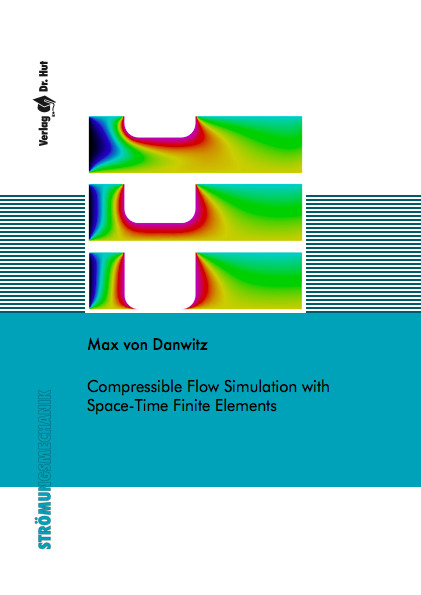
Compressible Flow Simulation with Space-Time Finite Elements
Seiten
2021
Dr. Hut (Verlag)
978-3-8439-4936-1 (ISBN)
Dr. Hut (Verlag)
978-3-8439-4936-1 (ISBN)
- Keine Verlagsinformationen verfügbar
- Artikel merken
Compressible flows are characterized by the fact that the fluid density changes significantly throughout the region of interest. This applies but is not limited to gas flows in technical applications, such as the blow-by flow in internal combustion engines. In many cases, the analysis of compressible flows with physical experiments is costly, due to high pressures or temperatures involved. Additionally, in the case of blow-by, spatially resolved measurements are notoriously difficult to conduct due to the small dimensions of the gaps in the investigated piston ring-pack geometry. Moreover, the piston ring motion inside the grooves leads to topology changes in the flow domain that render flow measurements almost impossible. To understand the flow behavior nevertheless, one has to resort to numerical simulations.
A simulation tool for compressible flows in such complex geometries is developed in this thesis. The mathematical description of the gas flow is based on the compressible Navier–Stokes equations, which are formulated with the pressure-primitive variables as generalized advective-diffusive system.
A large emphasis of this work is on unstructured space-time meshes, which offer several advantages for finite element simulations of the problems described above. For example, a spatial computational domain with time-varying topology can be discretized with a connected boundary-conforming space-time mesh. For this purpose, a three-dimensional spatial geometry requires a four-dimensional pentatope mesh. To enable the construction of pentatope meshes for complex geometries, the elastic mesh update method is extended to four-dimensional meshes for the first time.
In addition, an unstructured spacetime mesh allows for local refinement in space and time. Advantages of the latter are demonstrated in a final simulation of the three-dimensional transient compressible gas flow through a piston ring-pack.
A simulation tool for compressible flows in such complex geometries is developed in this thesis. The mathematical description of the gas flow is based on the compressible Navier–Stokes equations, which are formulated with the pressure-primitive variables as generalized advective-diffusive system.
A large emphasis of this work is on unstructured space-time meshes, which offer several advantages for finite element simulations of the problems described above. For example, a spatial computational domain with time-varying topology can be discretized with a connected boundary-conforming space-time mesh. For this purpose, a three-dimensional spatial geometry requires a four-dimensional pentatope mesh. To enable the construction of pentatope meshes for complex geometries, the elastic mesh update method is extended to four-dimensional meshes for the first time.
In addition, an unstructured spacetime mesh allows for local refinement in space and time. Advantages of the latter are demonstrated in a final simulation of the three-dimensional transient compressible gas flow through a piston ring-pack.
| Erscheinungsdatum | 03.01.2022 |
|---|---|
| Reihe/Serie | Strömungsmechanik |
| Verlagsort | München |
| Sprache | englisch |
| Maße | 148 x 210 mm |
| Gewicht | 248 g |
| Themenwelt | Naturwissenschaften ► Physik / Astronomie ► Strömungsmechanik |
| Technik | |
| Schlagworte | Finite Elemente • Simulation • Strömungsmechanik |
| ISBN-10 | 3-8439-4936-0 / 3843949360 |
| ISBN-13 | 978-3-8439-4936-1 / 9783843949361 |
| Zustand | Neuware |
| Haben Sie eine Frage zum Produkt? |
Mehr entdecken
aus dem Bereich
aus dem Bereich
Buch | Hardcover (2022)
Springer Vieweg (Verlag)
CHF 689,95


